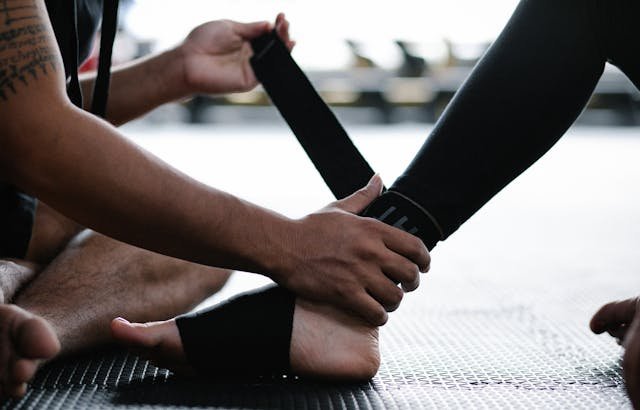Living with a brachial plexus injury over the long term comes with many layers of challenge. While most people talk about limited movement or muscle weakness, there’s another side that often goes unspoken — pain and fatigue. These symptoms can linger for years, and they affect how you work, sleep, move, and think. Managing them well can make the difference between simply coping and actually living fully.
At Robobionics, we’ve supported countless individuals navigating long-term recovery after brachial plexus injuries. We understand that pain and fatigue are not just side effects — they’re daily realities that need focused attention. This article will help you understand where these symptoms come from, what makes them worse, and how to manage them with the right approach, technology, and habits.
Understanding Pain After Brachial Plexus Injury
Pain from a brachial plexus injury is not always simple. It can show up in many ways. Some people feel sharp, burning sensations. Others feel a deep, aching pain that doesn’t go away. There are also those who experience phantom pain, which means they feel discomfort in a limb that they can’t move or no longer have. All these forms of pain are real, and they can become harder to manage if ignored.
The source of this pain is usually nerve damage. When nerves are stretched, torn, or disconnected, they can send confusing signals to the brain. These signals may continue long after the initial injury, even if the area looks healed on the outside. Over time, the brain and spinal cord may adapt in a way that actually increases pain sensitivity. This is called central sensitization, and it can make even a light touch feel uncomfortable.
Knowing where the pain is coming from helps guide how to treat it. While painkillers can help for short periods, long-term care often requires a mix of solutions. These can include gentle movement, temperature therapy, guided meditation, nerve stimulation, and prosthetic support. At Robobionics, we often see how adding the right prosthetic device can reduce strain on the body, improve balance, and lower pain caused by awkward postures or overuse of the healthy arm.
How Chronic Pain Affects Daily Life
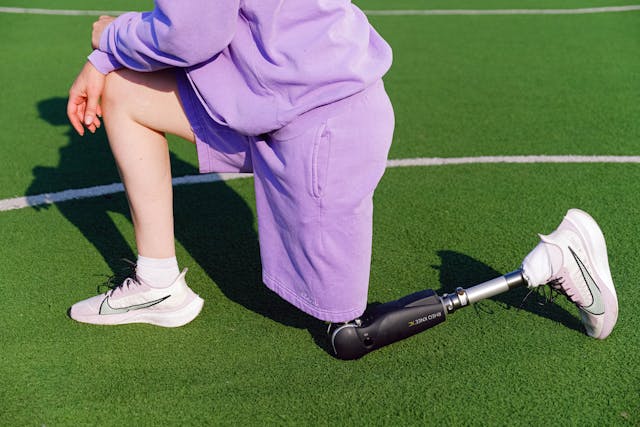
Pain doesn’t just stay in one part of the body. It changes how a person lives. When pain is always present, even basic activities can feel overwhelming. Getting dressed, cooking, or using a phone may take twice the time and energy. This can lead to frustration and a loss of confidence, which may slowly impact emotional health and relationships.
Pain also makes it harder to rest. Poor sleep can make pain worse, creating a cycle that’s hard to break. Over time, people with chronic pain may avoid activity to prevent discomfort. But this often backfires. Muscles become weaker, joints become stiff, and pain becomes even harder to control. Staying active in a gentle, guided way is one of the best tools to manage pain.
At Robobionics, we work with occupational therapists to help our users find movement routines that don’t trigger pain. Our prosthetic designs aim to restore function without increasing stress on the body. Many users report that just having a supportive device helps reduce the tension that comes from trying to do everything with one arm. Small adjustments to movement and posture can lead to big relief over time.
Emotional Impact of Long-Term Pain
Living with pain day after day can affect how you think and feel. It’s common to experience anxiety, irritability, or even depression. Many people worry about the future, wonder if the pain will ever stop, or feel misunderstood by others. These emotions are not signs of weakness — they are part of the pain experience and deserve just as much care.
Pain affects how you connect with others. You might avoid social events or spend less time doing things you enjoy. This can lead to isolation, which makes pain feel even worse. The key is to talk about what you’re going through. Having someone who listens — a therapist, friend, or support group — can reduce stress and help you stay motivated to keep moving forward.
At Robobionics, we’ve created a network of users who support each other through their recovery. We also offer check-ins and guidance, not just on the technical side, but for overall well-being. We believe that managing pain means supporting the whole person — not just the injured arm.
Where Fatigue Comes From and Why It Lasts
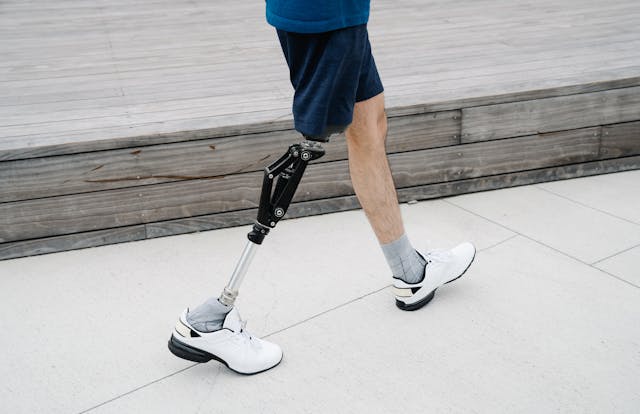
Fatigue is one of the most invisible symptoms of brachial plexus injury, but also one of the most common. It’s not just physical tiredness — it’s a deep, constant sense of exhaustion that doesn’t go away with sleep. This kind of fatigue is usually caused by a combination of nerve stress, overuse of the healthy side, and the mental effort of dealing with pain and limited movement.
When the injured arm can’t be used fully, the other arm has to do extra work. This can wear out muscles faster and cause stiffness in the neck, back, and shoulders. Simple tasks take more effort, and that drains your energy quickly. At the same time, your brain is working harder to coordinate movement, avoid pain, and stay balanced — even if you don’t realize it.
This ongoing energy drain often leads to a feeling of being tired all the time. You might wake up feeling unrested, lose focus easily, or struggle with motivation during the day. Over time, this can impact your job, family life, and even your recovery. Recognizing fatigue as a real part of the injury is important, because once you understand it, you can start to manage it better.
Managing Daily Tasks Without Overload
One of the best ways to reduce fatigue is to pace yourself. That means spreading out your energy across the day, instead of using it all at once. This is not always easy, especially if you’re used to being very active. But learning to balance effort and rest can help you get more done without feeling completely drained.
Pacing includes taking regular breaks, using both hands (with or without a prosthesis), and organizing tasks so that heavy activities are not stacked together. For example, instead of cleaning the house in one go, do one room in the morning and another in the evening. Or if cooking a meal is tiring, prepare parts of it ahead of time.
Robobionics supports users with tools and guidance to manage energy better. Our prosthetic arms are lightweight and designed to reduce the physical strain on the unaffected side. We also offer advice on setting daily routines that help you stay active while avoiding burnout. You don’t have to choose between doing things and feeling okay — with the right plan, you can have both.
Balancing Movement and Rest
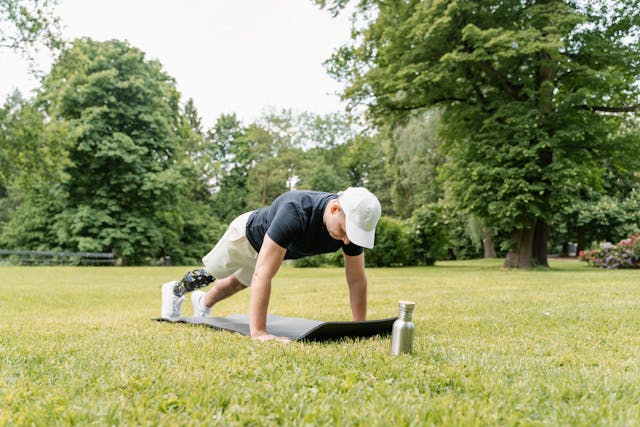
Staying still may seem like the best way to avoid pain and fatigue, but it can often make things worse. The body needs movement to keep muscles and joints healthy. But that doesn’t mean you have to push through exhaustion. The trick is to find the right balance between activity and rest — one that works for your body, not against it.
Gentle movement helps improve circulation, reduce stiffness, and even improve sleep. Short walks, stretching, and guided exercises are often enough to keep energy levels from dipping too low. Rest is equally important. Giving your body proper breaks during the day, even just 10 minutes at a time, can help prevent fatigue from building up.
At Robobionics, we guide users on how to plan movement into their day in a realistic way. We also collaborate with therapists to create movement routines that fit your lifestyle. Whether you’re at home, working, or traveling, we can help you build habits that make you feel stronger, not more tired.
How Prosthetic Support Can Reduce Strain
Using a prosthetic device isn’t just about restoring movement — it’s also about protecting your body from future problems. When one side of the body is injured, the other side often does too much. This can lead to overuse injuries, neck pain, shoulder problems, and tension headaches. A prosthetic arm can reduce that load by allowing both sides to share the work.
Even if a prosthetic doesn’t fully restore motion, it can support the weight of the arm, stabilize movements, and help with simple actions like lifting, pushing, or holding. This support makes it easier to do things without twisting your back or putting all the pressure on your good arm. Over time, this can reduce pain and fatigue across the whole body.
At Robobionics, we design our prosthetic arms to be ergonomic and adaptable. We take into account how the device will affect your posture, how long you’ll wear it, and how it will fit into your routine. If you’re feeling worn out from daily tasks, a properly fitted prosthetic could make a big difference — not just in what you do, but in how you feel afterward.
Preventing Secondary Injuries
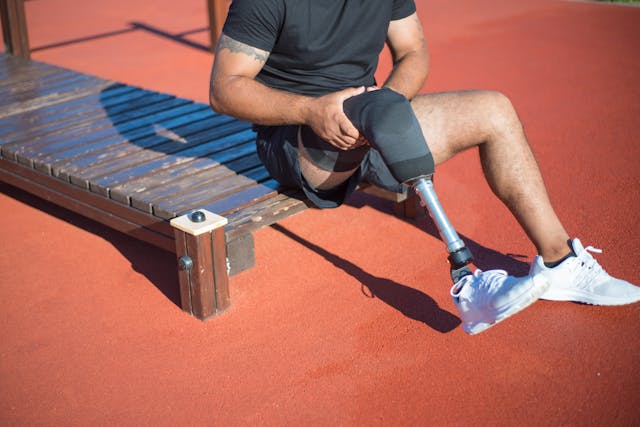
Long-term brachial plexus injury can lead to problems in other parts of the body. These are called secondary injuries. They often happen because of imbalanced movement, poor posture, or repeated strain on one side. Common examples include shoulder tendonitis, neck pain, back issues, and carpal tunnel syndrome in the working arm.
These injuries can slow down your recovery and increase your pain. That’s why prevention is key. Supporting the injured side with a prosthetic can help distribute movement more evenly. Therapy also helps you correct posture and teach your body safer movement patterns. Together, they protect your body from long-term damage and reduce the risk of additional health problems.
Robobionics works closely with therapists to build prosthetic systems that support both recovery and prevention. We also provide physical therapy, postural guidance during fittings and follow-ups. If you’re dealing with pain in areas beyond the original injury, it may be time to rethink how your body is moving — and how a prosthetic can ease the load.
Boosting Confidence and Activity Levels
Pain and fatigue often make people less active. Over time, this can lead to a feeling of helplessness or fear around trying new things. Many people worry that if they move too much or too fast, they’ll make things worse. While it’s true that pacing is important, staying active in a controlled way can actually help reduce both pain and tiredness.
A prosthetic device can provide the confidence to rejoin activities, socialize, or explore hobbies that were put on hold. Even small wins — like holding a cup or buttoning a shirt — can boost self-esteem and help you feel in control again. The psychological benefit of regaining independence often improves physical symptoms as well.
At Robobionics, we’ve seen how the right prosthetic not only supports function, but restores hope. We help users set realistic goals and celebrate every milestone. Whether it’s getting through a day with less pain, or simply enjoying a walk again, we believe that progress is always possible — and always worth it.
Building a Sustainable Self-Care Routine
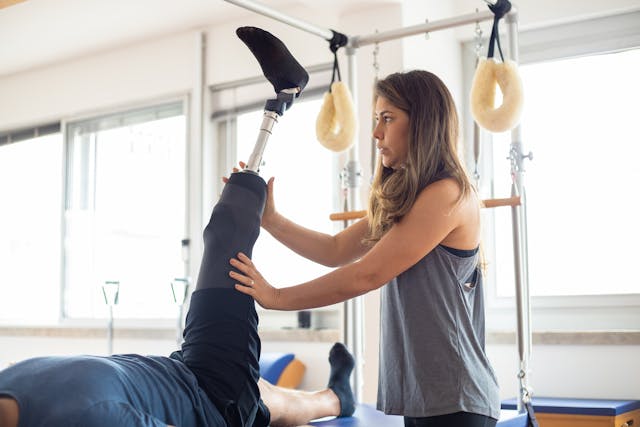
Long-term care for brachial plexus injury doesn’t only happen in clinics or during therapy sessions — it happens in everyday moments. Creating a self-care routine that works for your body is essential if you want to manage pain and fatigue over time. It’s not about doing everything perfectly. It’s about doing small things consistently that help your body feel supported and your mind stay balanced.
A sustainable self-care plan should be simple, easy to follow, and designed around your needs. It should allow room for both effort and rest. It should also include tools and habits that fit naturally into your lifestyle — whether that means using a prosthetic arm for daily tasks, setting a sleep schedule, or including short breathing exercises to reduce stress.
At Robobionics, we guide our users on how to turn recovery into a way of living. Through small changes in daily habits, you can slowly build a routine that makes you feel stronger, more in control, and more connected to your goals. You don’t have to do everything at once. One gentle step at a time is enough to create a big shift in how you feel day-to-day.
Morning Routines That Set the Tone
How you begin your day has a big impact on how the rest of the day unfolds. A calm, steady morning routine helps your body wake up gently and prepares your mind for activity. It doesn’t need to be long or complex. Even ten to fifteen minutes of quiet, focused time can improve your energy levels and reduce tension throughout the day.
Start by giving yourself time to stretch gently before getting out of bed. Movement should be slow and intentional, especially if you feel stiff. Take a few deep breaths to activate your body’s natural calming system. If you use a prosthetic device, take time to wear it comfortably and test your movements before starting your main activities. Avoid rushing — the goal is to build a sense of calm, not urgency.
Robobionics designs prosthetic arms that are quick to wear and easy to manage, especially in the morning. We also help you practice simple morning movements that get your arm and shoulder ready for the day ahead. If mornings are tough for you, ask us how to build a routine that’s both supportive and sustainable — one that protects your energy while boosting your confidence.
Evening Practices for Pain Relief and Recovery
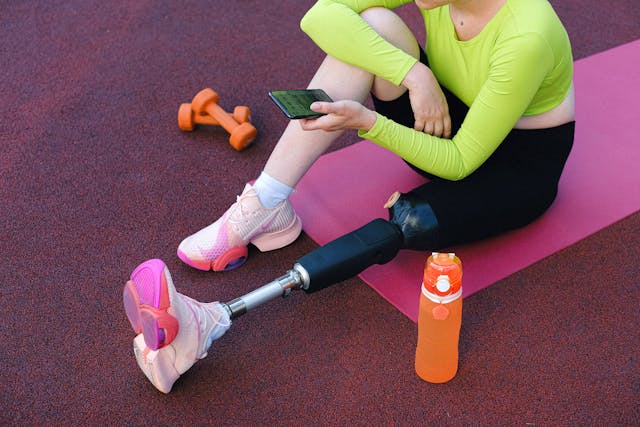
Just like mornings matter, evenings play a key role in how your body rests and heals. If pain or fatigue builds up during the day, a thoughtful evening routine can help bring it down before bedtime. This supports better sleep, which in turn helps reduce both symptoms the next day. Winding down properly is one of the most overlooked parts of injury management.
An ideal evening routine might include gentle movements, such as light stretching or a warm bath to loosen tight muscles. You can also use heat pads or cold packs depending on what works better for your pain. Journaling, listening to music, or doing a quiet activity helps settle your mind and ease emotional stress that builds up from discomfort or frustration.
At Robobionics, we provide our users with simple self-care tools they can use at home, along with training on how to relax and release body tension before sleep. If you find that pain or tiredness keeps you up at night, our team can help you design an evening plan that supports better rest and comfort — so you wake up ready to move again.
Tracking Progress Without Pressure
When you’re dealing with long-term injury, it’s easy to feel like nothing is changing — especially when progress is slow. That’s why keeping track of your daily habits, pain levels, and energy is so helpful. Tracking doesn’t mean judging yourself. It simply means noticing patterns. What makes your pain worse? What helps you feel better? Where are you improving, even in small ways?
You don’t need special tools to track your progress. A notebook, calendar, or a mobile app can be enough. Write down how you feel in the morning and evening. Note what activities you were able to do and how your body responded. Over time, you’ll see small wins — like needing fewer breaks, using your prosthesis more comfortably, or having fewer pain spikes during the week.
Robobionics supports this process by helping you set goals that are realistic and positive. We also provide tracking sheets and mobile-friendly rehab apps that make it easy to record your journey. If you ever feel stuck, we can look at your progress together and adjust your care plan. Remember, you are not behind — you are on your own timeline, and every step counts.
Conclusion: A Better Way to Live with Brachial Plexus Injury
Pain and fatigue are not just symptoms — they’re obstacles that shape how you live, think, and feel. But they don’t have to define your life. With the right tools, mindset, and support system, you can manage these challenges and continue doing the things that matter to you. It takes patience, planning, and the willingness to try new approaches — but the rewards are real and life-changing.
At Robobionics, we’re committed to helping people not only move better but feel better. Our prosthetic solutions are designed to reduce strain, support balance, and fit into your daily life with ease. We also offer long-term guidance on therapy, pacing, comfort, and emotional support — because true recovery is about more than just mobility.
If you’re ready to take control of your pain and fatigue, schedule a free consultation with Robobionics. Let us help you build a smarter, stronger, more comfortable path forward — one step at a time.



